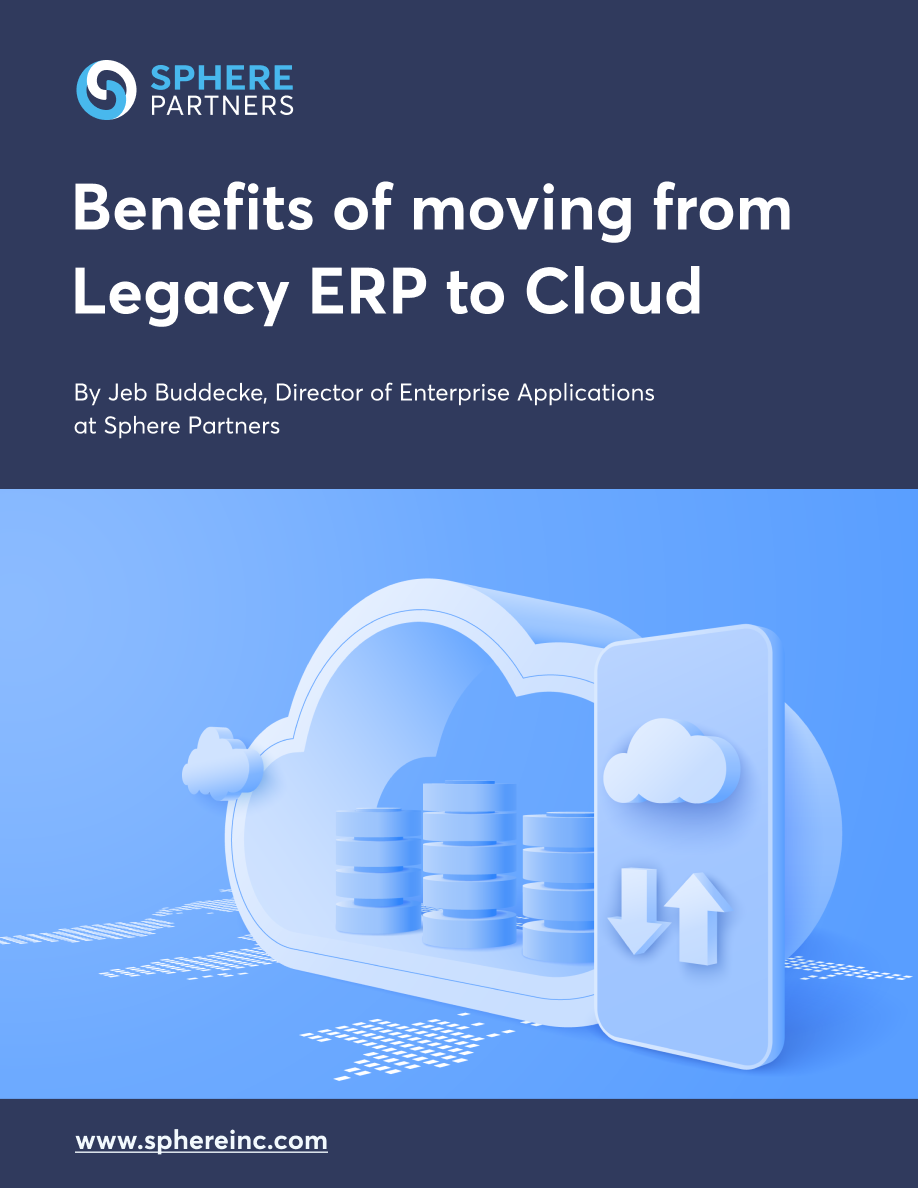Benefits of moving from Legacy ERP to Cloud
Consider cars in the 1990s or 2000s versus new ones today. Today, just like then, there were wheels, a steering wheel, an engine, windows, radios, etc., but cars today have hundreds of sensors, satellite radio, self-diagnostics, and many new features. They are basically rolling computers. Similarly, newer ERP systems have changed just as much. They do many of the same functions as systems from decades ago, but in different ways and with much better usability.
Legacy ERP systems are older versions that were implemented decades ago and operate based on client-server architecture. Cloud ERP systems were enabled over the past 15 years as internet connections and speeds have improved, as clients have demanded an any-time connection, and as trust in cloud applications has grown.
Our Director of Enterprise Applications, Jeb Buddecke, dives in the advancements of enterprise applications in cloud systems. Download the PDF to learn the key differences between legacy and cloud ERP, and the process of replacing legacy systems.
Contents
- Key Differences Between Legacy and Modern Cloud ERP
- Comparing Legacy and Cloud ERP Systems
- Replacing Your Legacy Software
